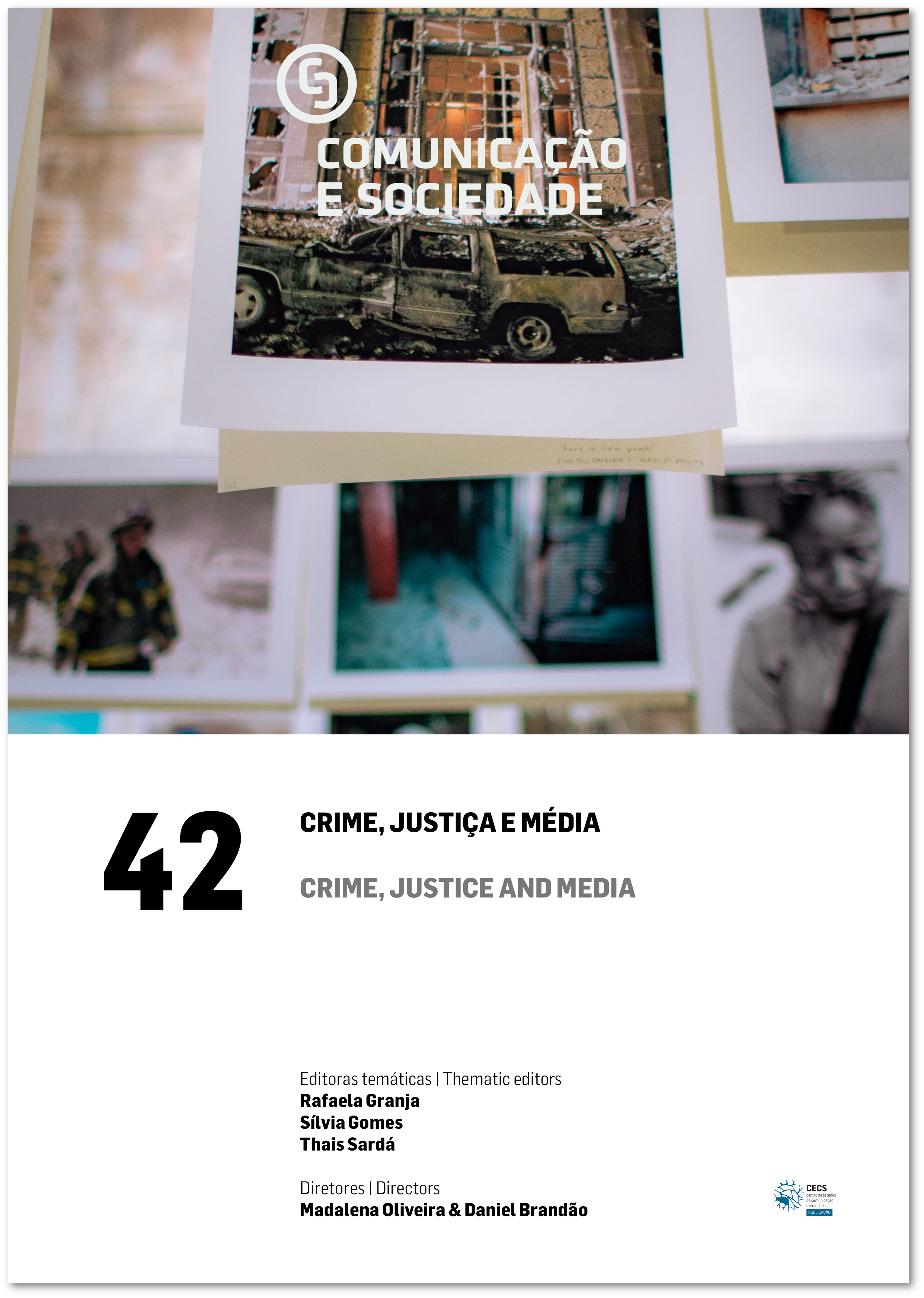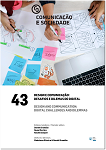The Art of Smearing: How Is Feminist Decolonizing Artivism Received by Italian Newspapers? The Case of Montanelli’s Statue
DOI:
https://doi.org/10.17231/comsoc.42(2022).4025Keywords:
Indro Montanelli, feminist artivism, gender-based violence, Italian journalism, decolonizing, Italian colonialismAbstract
On March 8, 2019, during a demonstration organised on occasion of the International Women's Day in Milan, members of the feminist collective Non Una Di Meno (not one woman less) Milano threw washable pink paint on the statue that commemorates the Italian journalist Indro Montanelli (1909–2001). The aim of exposing at a visual level the acclaimed writer’s controversial past was crucial to the group’s symbolic action. In fact, despite being a reference figure for many Italian intellectuals, Montanelli participated in the Abyssinian war in 1935 and, as a member of the fascist army, he engaged in a relationship with a 12-year-old local girl who acted as his wife and sexual object. The collective’s action, which can be labelled as a feminist decolonizing performance, has already been read as a form of artivism that manipulated the Italian’s artistic heritage with the objective of criticising the existing narrative on Italy’s colonial past. In this sense, an analysis of the resonance that journalistic coverage assigned to the event proves crucial for understanding the impact that such an action has had on Italian public opinion and the progress towards the country's mental decolonization. This article presents the findings of a qualitative analysis conducted on a corpus of 10 online newspaper articles published in the aftermath of the artivist performance on Montanelli’s statue. The study employs Foucauldian critical discourse analysis in order to identify the rhetorical strategies used by journalists to criticise or legitimate the feminist collective’s action. Among these strategies, particular attention is paid to those discursive techniques adopted to portray the act as a form of vandalism or, on the contrary, as a form of art. The aim is to show how the discourse on art versus non-art/vandalism is used to confirm (or overcome) the discursive limits imposed by the still dominant narratives on the nation’s colonial history as well as on the disposability of “othered” women’s bodies.
Downloads
References
Abis, S., & Orrù, P. (2016). Il femminicidio nella stampa italiana: Un’indagine linguistica. gender/sexuality/italy, 3, 18–33. https://doi.org/10.15781/41gr-5p26 Bisiach, G. (Writer & Director). (1969). L’ora della verità: Indro Montanelli. RaiUno.
Boyle, K. (2005). Media and violence. Sage.Bullock, C. F., & Cubert, J. (2002). Coverage of domestic violence fatalities by newspapers in Washington state. Journal of Interpersonal Violence, 17(5), 474–499. https://doi.org/10.1177/0886260502017005001 Del Boca, A. (1998). Il colonialismo italiano tra miti, rimozioni, negazioni e inadempienze. Italia contemporanea, (212), 589–603. DOI: https://doi.org/10.1177/0886260502017005001
Endaylalu, G. A. (2018). Mustard gas massacres and atrocities committed by Italy in 1939 against the inhabitants of Menz, Merhabete, and Jamma in Amesegna Washa/Zeret Cave. Cultural and Religious Studies, 6(9), 501–530. DOI: https://doi.org/10.17265/2328-2177/2018.09.001
Gerbi, S., & Liucci, R. (2014). Indro Montanelli: Una biografia (1909-2001). Hoepli.
Giuliani, G. (2018). Race, nation and gender in modern Italy. Intersectional representations in visual culture. Palgrave.Groys, B. (2014). On art activism. E-flux Journal, 56, 1–14. https://www.e-flux.com/journal/56/60343/on-art-activism/
Hallin, D., & Mancini, P. (2004). Comparing media systems. Three models of media and politics. Cambridge University Press. DOI: https://doi.org/10.1017/CBO9780511790867
Houérou, F. (2015). Gender and sexual abuses during the Italian colonization of Ethiopia and Eritrea – The ‘Insabbiati’. Sociology Mind, 5, 255–267. https://doi.org/10.4236/sm.2015.54023 DOI: https://doi.org/10.4236/sm.2015.54023
I sentinelli di Milano. (2019, March 9). Ieri sera durante il corteo femminista la statua di Indro Montanelli è diventata rosa, a coprire il nero delle cose [Image attached] [Status update]. Facebook. https://www.facebook.com/isentinellidimilano/posts/1152717204910698/
Jäger, S., & Maier, F. (2009). Theoretical and methodological aspects of Foucauldian critical discourse analysis. In R. Wodak & M. Meyer (Eds.), Methods of critical discourse analysis (pp. 34–61). Sage.
Jedlowski, P. (2011). Memoria pubblica e colonialismo italiano. Storicamente, 7, 1–3. https://storicamente.org/jedlowski_colonialismo
Labanca, N. (2015). La guerra d’Etiopia. 1935-1941. Il Mulino.
Leone, G. (2011). Se gli inumani siamo noi. Riflessioni sulla narrazione intergenerazionale dei crimini di guerra commessi dal gruppo di appartenenza. Rivista internazionale di filosofia e psicologia, 2(2), 131–147. https://www.rifp.it/ojs/index.php/rifp/article/view/rifp.2011.0015
Lissi, S. (2019). Paint it pink. The role of heritage in the debate on Italy’s colonial past [Unpublished manuscript]. Utrecht University.
Mandolini, N. (2019). Femminicidio, prima e dopo. Un’analisi qualitativa dei casi Stefania Noce (2011) e Sara Di Pietrantonio (2016). Problemi dell’informazione, 2, 247–277. https://doi.org/10.1445/97793
McNeill, S. (1992). Women killer as tragic hero. In D. E. H. Russell & J. Radford (Eds.), Femicide. The politics of women killing (pp. 178–183), Twayne Publishers.
Meyers, M. (1996). News coverage of violence against women. Sage.Montanelli, I. (2020, February 12). Quando andai a nozze con Destà. Il Corriere della Sera. DOI: https://doi.org/10.4135/9781452243832
Mouffe, C. (2007). Artistic activism and agonistic spaces. Art&Research. A Journal of Ideas, Contexts and Methods, 1(2), 1–5. https://www.artandresearch.org.uk/v1n2/mouffe.html
Non Una Di Meno – Milano. (2019, March 9). Per la Repubblica si tratta di vandalismo, per noi invece è una doverosa azione di riscatto. Queste le parole di [Image attached]. Facebook. https://www.facebook.com/nonunadimenomilano/photos/per-la-repubblica-si-tratta-di-vandalismo-per-noi-invece-%C3%A8-una-doverosa-azione-d/807900419569928/
Office of the High Commissioner for Human Rights, Joint United Nations Programme on HIV/AIDS, United Nations Development Programme, United Nations Economic Commission for Africa, United Nations Educational, Scientific and Cultural Organization, The United Nations Population Fund, United Nations High Commissioner for Refugees, The United Nations Children's Fund, United Nations Development Fund for Women & World Health Organization. (2008). Eliminating female genital mutilation. An interagency statement. World Health Organization. https://www.un.org/womenwatch/daw/csw/csw52/statements_missions/Interagency_Statement_on_Eliminating_FGM.pdf
Palonen, E. (2008). The city-text in post communist Budapest: Street names, memorials and the politics of commemoration. GeoJournal, 73, 219–230. https://doi.org/10-1007/s10708-008-9204-2 DOI: https://doi.org/10.1007/s10708-008-9204-2
Pankhurst, R. (1999). Italian fascist war crimes in Ethiopia: A history of their discussion, from the League of Nations, to the United Nations (1936-1949). Northeast African Studies, 6(1/2), 83–140. https://doi.org/10.1353/nas.2002.004 DOI: https://doi.org/10.1353/nas.2002.0004
Ponzanesi, S. (2012). The color of love: Madamismo and interracial relationships in the Italian colonies. Research in African Literatures, 43(2), 155–172. https://doi.org/10.2979/reseafrilite.43.2.155 DOI: https://doi.org/10.2979/reseafrilite.43.2.155
Trento, G. (2011). Madamato and colonial concubinage in Ethiopia: A comparative perspective. Aethiopica, 14, 184–205. https://doi.org/10.15460/aethiopica.14.1.419 DOI: https://doi.org/10.15460/aethiopica.14.1.419
Trento, G. (2012). Ethiopian-Italians. Italian colonialism in Ethiopia and gender legacies. Arabian Humanities. International Journal of Archaeology and Social Sciences in the Arabian Peninsula, 17. https://doi.org/10.4000/cy.1878 DOI: https://doi.org/10.4000/cy.1878
Downloads
Published
How to Cite
Issue
Section
License
Copyright (c) 2022 Nicoletta Mandolini

This work is licensed under a Creative Commons Attribution 4.0 International License.
Authors own the copyright, providing the journal with the right of first publication. The work is licensed under a Creative Commons Attribution 4.0 International License.














